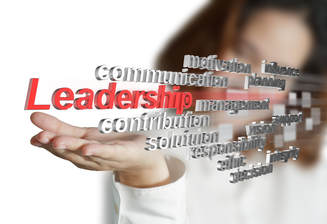 Coaching is a conversation between coach and coachee where both work together so that the coachee can take future-oriented action to enhance life experience, attain goals, learn and enhance performance in their professional and/or personal life. While the coach facilitates some kind of change or transformation within the coachee, it is the coachee who has to do the work. Essential to the coaching process is that the coachee grants permission to the coach to coach the coachee. The coach facilitates the coaching process to support the coachee in:
There are different types of coaching, skills coaching, performance coaching, developmental coaching and generative coaching. Skills coaching is oriented towards the development of skills, for example communication skills, presentation skills or sales skills. In performance coaching the coach and coachee focus on setting goals, overcoming obstacles and evaluating and increasing performance. Developmental coaching deals with personal and professional development issues, and is characterised by moments of insight and developing emotional competencies. Generative coaching is dealing with becoming self-reliant and building skills to deal with future issues through flexibility, adaptability and the capacity to self-transformation. Although there is a rising demand for coaches, there is very few research on the effectiveness of coaching or its different approaches. There are some studies demonstrating increase in productivity, other studies show that training combined with coaching has better results than training on its own. Some studies show positive effects on stress. As coaching processes are conversation based, and results are often subjective, more research is needed but very difficult. Most people who perform at peak performance level, make use of a coach. I would go further with a quote from Dr. Ken Blanchard, author of the One Minute Manager: “It doesn’t matter how successful we are, we all need a coach.”
0 Comments
 Increasing influence, gaining more impact and convincing people is an important skill in many fields. Influence increases your impact within the organization, it helps you convincing customers to buy your products, or it helps you to encourage people to do the right thing in health and safety or in environment issues. A lot of research has been done on how to influence people, resulting in very different approaches and viewpoints. These approaches can compliment each other, enabling you as a reader to get a broader view. One of the important reasons why we come across such different theories about influence is because they often start from different use cases. One set of principles of influence that appears again and again in different formats, is the set of 6 influence heuristics that were first described by Cialdini. The use case there is the broadest possible, influence in everything you do, which makes it more difficult to find out how you can apply these 6 principles in your particular case. One example is the TEDx presentation by Steve Martin – not the actor – about influence at work. In his presentation he chooses one of the 6 heuristics, the one of social proof, and extensively illustrates how people are influenced by the reaction and behaviour of others, and generally deny that they are. In his presentation he describes how his own experiments with the social proof strategy demonstrate which type of communication works best in encouraging behaviour – “The majority of people …” – and in prevention of behaviour – “Even if one person would …”. This is very different from the theories that go deeper into applying influence. One Harvard Business Review article about how experts can increase their impact on top management describes very specific skills to develop based upon the successful and not so successful experiences of risk management experts in two banks in the UK. The four important skills are first identifying important business issues where you could apply your expertise. It means that you will have to go and talk to people that you usually do not have contact with. Second, you have to start developing and deploying tools that embed your expertise. Third, you involve people throughout the organisation in the development and usage of your tools. This way you develop collaboration and create allies throughout the organisation to support your impact. The fourth skill is to go out and help the important decision makers to understand the complex content so they can make better decisions. Your impact comes from making complex subjects easier to understand and translating technical jargon into understandable business language. How can all this help you to gain more influence. First of all, it is clear that you need to have a grasp of the general concepts of influence, and the starting point there is the work of Cialdini. His book Influence has many examples, but may be hard to apply in your particular case. Then look for those studies that describe influence in your particular context, like sales or customer service or whatever it is. Once you are familiar with the work of Cialdini, you will probably recognise the principles in the more specific applications. This will give you the examples upon which you can eventually develop your own set of practical influencing tools that fit your needs. |
AuthorsMarc Innegraeve. Archives
April 2022
Categories
All
|
Services |
CompanyBraindrums BVBA
Dorp 40 3272 Testelt BELGIUM BE 0871.087.120 |
|


 RSS Feed
RSS Feed